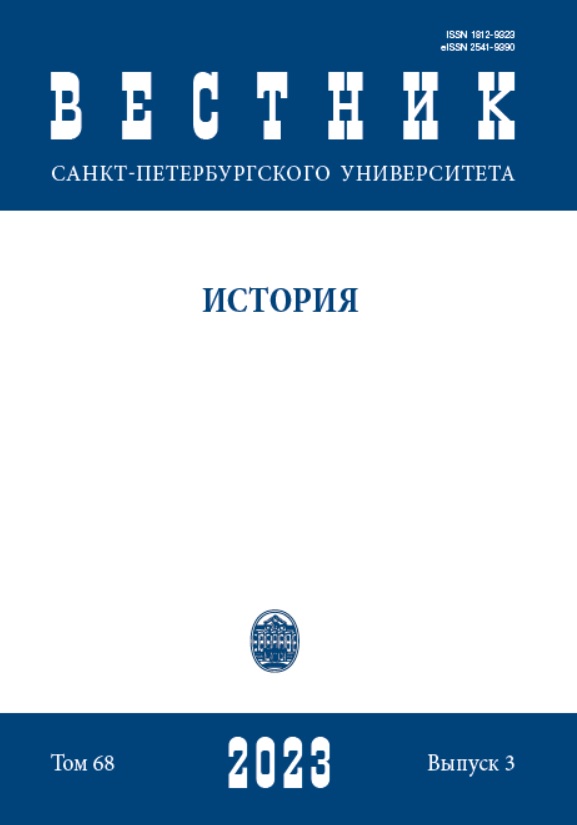Pigment composition in the privilegio rodado of Juan the Second
DOI:
https://doi.org/10.21638/spbu02.2023.309Abstract
The article examines the pigments used in the design of the privilege of King Juan II of Castile and Leon to his favorite Alvaro de Luna for a third part of the city of Arevalo. The charter comes from the collection of Academician Nikolai Petrovich Likhachev (1862-1936), held at the St. Petersburg Institute of History of the Russian Academy of Sciences. The document belongs to the most solemn type in the Royal Chancellery of Castile; its formula was extremely stable, while its exterior design was dynamic. The design consists of three parts: the initial, the rueda and the border. The study of pigments of was carried out by optical microscopy, multispectral imaging and X-ray fluorescence analysis. It was found that, contrary to the prevailing opinion in the literature, the pigments were placed on the parchment without any ground or pre-drawing. It was found that both mineral and organic pigments were used. Different pigments were used in different elements of the decoration of the charter. The rueda and initial form one group, the border another. In the first group, red is obtained using pure cinnabar or a mixture of it and red lead. Blue and pink are formed by organic dyes in combination with lead white. The traditional Western European azurite and lapis lazuli are not used. The green is most likely a mixture of orpiment and indigo. This combination was not typical of Western European illuminations of the Late Middle Ages. Copper pigments were more common during this period. Black pigment is represented by soot, white by lead white. Green, on the other hand, is represented by copper pigments in the border, while blue and pink contain no lead. The difference in pigments set may indicate two different stages of the fabrication of the charter, different in time and place. A study also confirmed the use of natural gold, which is consistent with the high status of the recipient of the privilege, Alvaro de Luna, who played an important role in the Castilian court. Refs. 30.
Keywords:
Juan II, King of Castile and Leon, diplomatics, pigments, XRF, optical microscopy, multispectral imaging, privilege, Alvaro de Luna
Downloads
References
Downloads
Published
How to Cite
Issue
Section
License
Articles of "Vestnik of Saint Petersburg University. History" are open access distributed under the terms of the License Agreement with Saint Petersburg State University, which permits to the authors unrestricted distribution and self-archiving free of charge.





